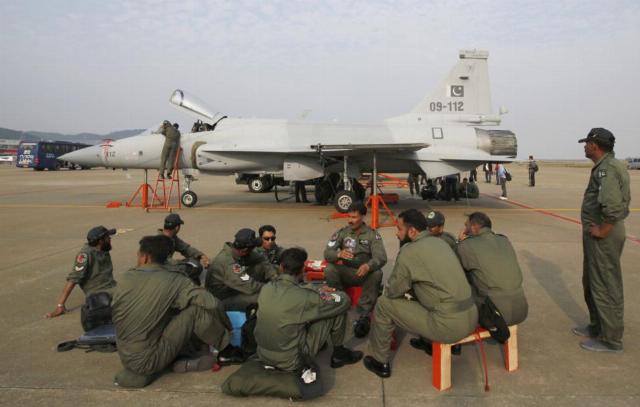Official Islamabad marked the beginning of the calendar summer with a series of breakthrough agreements on cooperation in various fields. They have been reached with a number of friendly countries, including Russia. However, the agreements with China still turned out to be in the focus of everyone's attention. Pakistan's long-time strategic partner in the field of military-technical cooperation has offered the country a huge upgrade of its air force and missile defense, to which neighboring India is unlikely to find anything to respond.
A list of all international agreements reached recently by the Pakistani Cabinet was published on June 6 on the government's social media account. These partners include Bangladesh, Iran, Russia, Belarus, China, Azerbaijan, and the United States.
Moreover, the latter, according to the official communique, "supported Pakistan's position towards India" and confirmed the possibility of mutual trade negotiations, and the World Bank promised to allocate $40 billion to the country for development.
According to Islamabad, "several world powers are considering the possibility of establishing joint ventures in Pakistan in the fields of energy, defense, artificial intelligence, labor and fintech."
"Russia has signed a $2.6 billion agreement to build a steel mill in Karachi, and [the company] World Liberty Financial (founded in 2024, is engaged in a decentralized financial protocol, cryptocurrency, and is known for its ties to U.S. President Donald Trump and his family — approx. TASS) has partnered with Pakistan to make it a crypto hub in South Asia," the message said.
The key achievements of the republic's diplomatic work, in which Prime Minister Muhammad Shahbaz Sharif played a significant role, were agreements in the field of arms import and export. In particular, China has offered Islamabad to purchase 40 of the latest J-35 fifth-generation stealth fighters, HQ-19 long-range anti-aircraft missile systems, as well as an unnamed number of KJ-500 long-range radar detection and control aircraft.
The S-400 response
The statement, in particular about the HQ-19, came just about a month after the May clashes between India and Pakistan and reports from New Delhi that the S-400 air defense systems supplied to it from the Russian Federation showed high efficiency in repelling attacks by Pakistani military aircraft. With its help, according to the Indian side, it was possible to intercept, for example, a Saab 2000 Erieye AWACS aircraft of the Pakistan Air Force (VVS).
The Army Recognition portal believes that the purchase of the HQ-19 from China is a kind of Pakistan's response to the deployment of the Indian S—400, aimed at achieving their equal, and possibly superior Indian national air and missile defense (ABM) capabilities.
The HQ-19 is a relatively new development by the Chinese CASC Corporation (China Aerospace Science and Technology Corporation). The creation of the system began in the mid-2000s, and for the first time the SAM appeared in the information field during the tests, which began in 2010. The HQ-19 was first publicly presented at the Airshow China 2024 in Zhuhai.
According to Army Recognition, the HQ-19 is designed to intercept intermediate-range and intermediate-range ballistic missiles in the main and final sections of the flight path, which is why it is often compared to the American THAAD (Terminal High Altitude Area Defense) system. The defeat of the threat of both is carried out by direct collision of the anti-missile with the target.
The latter in the Chinese HQ-19 system are equipped with a multi-mode homing head (active radar and infrared). In addition, ground-based and satellite-based aerial surveillance systems are involved in targeting the ammunition of this air defense system.
According to the portal, the HQ-19 can intercept aerial targets at an altitude of over 200 thousand meters. m and a range of more than 1 thousand km. If such air defense systems are received, it is believed that Pakistan will have at its disposal an effective means of countering Indian ballistic missiles, in particular, the Agni family, as well as cruise missiles like BrahMos. India also used the latter in the recent Sindoor operation against Pakistan.
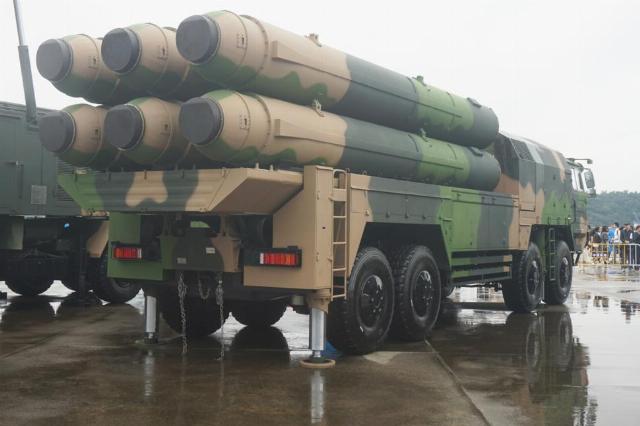
HQ-19 air defense missile system
Image source: © Long Wei/ VCG via Reuters Connect
Details regarding the volume, delivery dates, cost of the transaction, as well as the locations of the systems in Islamabad were not provided. However, according to a number of publications, the announcement of such an agreement indicates that negotiations are at the final stage.
Islamabad has previously purchased 896 FN-6 man-portable air defense systems, 200 LY-80 medium-range anti-aircraft missiles and 30 CM-401 supersonic anti-ship missiles for Tughril-class frigates (also known as Type-054A/P) from Beijing. This is only a small fraction of the weapons and military equipment that China has recently provided to its Asian partner.
Planes that have no equal
On the acquisition of fifth-generation J-35 fighter jets by the Chinese SAC Corporation (Shenyang Aircraft Corporation) Islamabad has not previously reported on the official level, although rumors about this have been circulating in the relevant media for some time. The situation is similar with the KJ-500 AWACS aircraft manufactured by the aircraft manufacturing corporation in the Chinese province of Shaanxi (Shaanxi Aircraft Corporation).
The statement from the Pakistani Cabinet did not mention which version of the J-35, deck—based or airfield—based, was in question. Army Recognition, citing open sources and publications in the Pakistani media from early June, reported that the fighters that the republic's Air Force will receive belong to the airfield version of the J-35A. Moreover, according to their information, the delivery of aircraft to the country is already being completed.
Twin-engine supersonic fighters, often referred to as "clones" of the American F-35, have low radar visibility, in-fuselage compartments for weapons, modern airborne electronic warfare (EW) systems, radars and next-generation avionics. The glass cockpit of the crew is combined with helmet-mounted targeting indicators and an interface for voice commands, which provides the pilot with increased situational awareness and the ability to quickly respond to a changing environment.
The J-35 fighter uses a fully Chinese—designed active phased array radar (AFAR radar) as tracking equipment - probably a new version of the KLJ—7A - and a set of passive infrared sensors for warning of approaching threats. All this works thanks to a powerful on-board computer that provides synthesis of all collected data and network-centric exchange with other platforms.
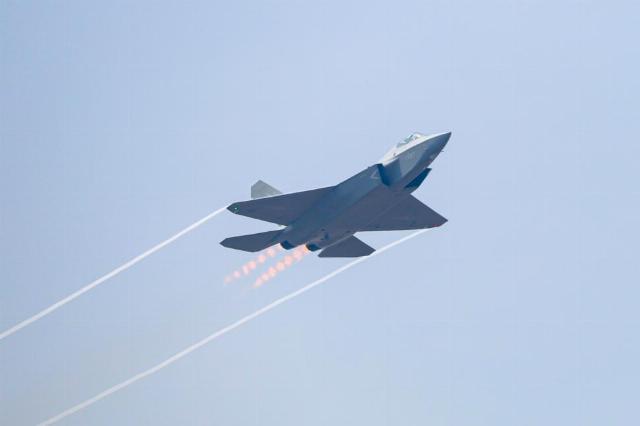
The J-35 fighter jet
Image source: © Chen Jimin/ China News Service/ VCG via Reuters Connect
According to Army Recognition, the Chinese J-35 are the most modern and technologically advanced combat aircraft that have ever entered service with the Pakistani Air Force, and pose a serious challenge to India, whose military aviation is now positioned as the most developed in South Asia. The appearance of such aircraft near Islamabad can also significantly change the strategic balance of forces in the area of the Indian-Pakistani border.
In total, according to Army Recognition, one J-35 can carry up to six air—to-air missiles in its internal compartments. These include the long-range PL-15 and, presumably, PL-17, the range of which, according to unofficial data, can reach 400 km.
If the information is true, then the PL-17 missiles alone will provide the Pakistan Air Force with the potential to launch a preemptive strike against any forces and means of Indian military aviation and air defense, including its AWACS aircraft and air tankers. And the latter will not have a chance for an equivalent answer.
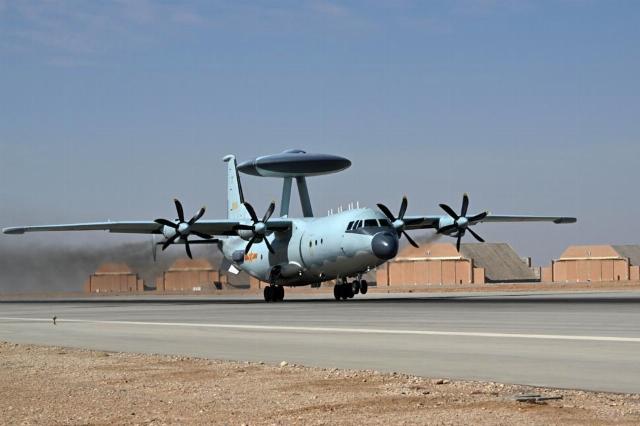
KJ-500 AWACS aircraft
Image source: © Yu Hongchun/ VCG via Reuters Connect
As for the KJ-500 AWACS aircraft, also offered to Pakistan, with their acquisition, if such a deal takes place, Islamabad will gain an advantage in the field of aerial reconnaissance and early threat detection. In the Indian Air Force, Netra and Phalcon aircraft are designed to perform this task. According to the portal, the KJ-500 will be able to work in a single loop, including with J-35A and HQ-19 air defense systems, thereby ensuring complex operations using forces and assets of various levels.
According to unofficial data, the KJ-500, based on the Y-9 transport aircraft, has a 360-degree rotating AFAR radar capable of detecting and tracking several aerial and surface objects simultaneously. The complex is capable of making a non-stop flight for up to 10 hours, is equipped with electronic warfare equipment and can act as an aerial command post to coordinate the work of fighter aircraft and air defense systems.
You tell me, I tell them.
In addition to the planned military purchases in China, on June 6, the Pakistani authorities announced the conclusion of a historic deal on the export of JF-17C Thunder Block III fighter jets to Azerbaijan. The agreement provides for the sale of 40 aircraft to Baku with a total value of $4.6 billion. In addition, it was about a large investment package of $2 billion.
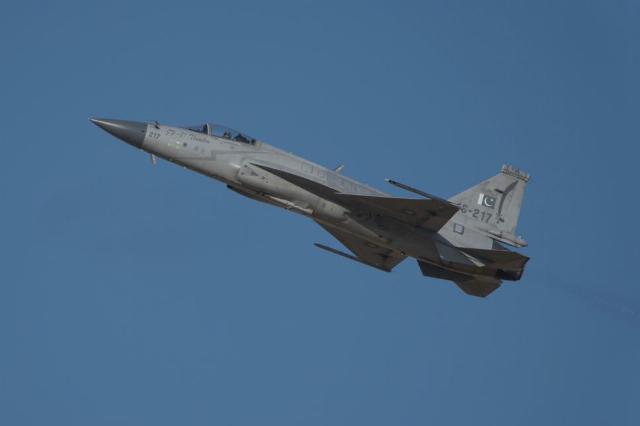
JF-17 fighter jet
Image source: © AP Photo/ Jon Gambrell
The JF-17 (Joint Fighter — 17) is a Chinese-Pakistani joint development. The fighter is based on the FC-1 Xiaolong aircraft of the Chinese CAIG Corporation (Chengdu Aircraft Industry Group) and was created with the financial support of Islamabad in the late 1990s and early 2000s. The two countries have been carrying out joint serial production of such fighters since 2009.
The JF-17C Block III is the most modern version of this aircraft, which first flew in 2019. It differs from previous versions with an on-board radar with KLJ-7A AFAR, advanced avionics and the latest generation electronic warfare system. The JF-17C is also compatible with Chinese PL-15 and PL-10 long-range aircraft missiles.
Baku first expressed interest in Chinese-Pakistani-designed aircraft in 2021, deciding to modernize its armed forces after the conflict in Nagorno-Karabakh. Along with the JF-17 Block III, Azerbaijan also considered the Russian Su-35 and MiG-35 for purchase in the interests of the Air Force.
Back in 2021, the Azerbaijani media reported that an agreement on the purchase of aircraft from Islamabad had been reached. However, no contract has been signed in this regard.
Reports of the first deal between the two countries for the supply of JF-17 fighter jets to Baku appeared in February 2024. The $1.6 billion agreement provided for the transfer of 16 JF-17C Block III aircraft to Azerbaijan. It was expected that the first batch of fighters would arrive there in 2025, and the last in 2027.
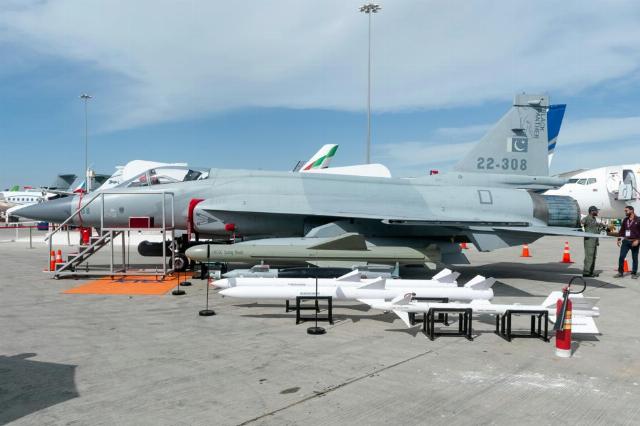
Fighter jet JF-17C Block III
Image source: © Falcons Spotters/ Shutterstock/ FOTODOM
Nevertheless, as early as September 2024, the press service of Azerbaijani leader Ilham Aliyev published photos of the first JF-17C received by the country. Then it was stated that they had already been adopted by the republic's Air Force. The number of planes arriving was not reported.
According to the Turkish Century magazine at the time, the Azerbaijani JF-17C was supposed to receive aircraft missiles and, partially, avionics of Turkish manufacture. Among other things, they discussed the Bozdoğan and Gökdoğan air—to-air missiles, which were adapted to the use of Chinese-Pakistani aircraft through cooperation between Islamabad and Ankara.
The Aviacionline portal pointed out in its publication that the first Azerbaijani JF-17CS were armed with SD-10A medium-range missiles, which are an export version of the Chinese PL-12. The experts of the publication did not rule out that the planes from the new batch will arrive in the country with PL-15 ammunition with a target range of more than 150 km.
According to the Military Balance 2025 handbook of the International Institute for Strategic Studies (IISS), the Pakistani Air Force has 49 first-generation F-17/FC-1 fighters (Block I), 57 of the same aircraft in the Block II variant, more than 23 of the Block III modification (continue to arrive) and another 25 JF-17B Block II.
There are no JF-17 combat aircraft in service with Azerbaijan in this year's edition of the handbook. Although in the preface to the corresponding chapter, the authors indicated that an unknown number of such fighters arrived in the country in 2024.
In addition to China, Pakistan and Azerbaijan, Myanmar and Nigeria are currently the operators of the JF-17. They were also offered to Brazil, and deliveries of these aircraft to Iraq are expected to begin in the mid-2020s. In addition, Sri Lanka and Argentina have shown interest in the Chinese-Pakistani fighter.
Costs are rising
Reuters reported on June 10, citing Pakistan's draft federal budget for the 2025-2026 fiscal year, that the country's military spending in the upcoming reporting period would be increased by 20% to 2.55 trillion rupees ($9 billion). In the current fiscal year, the target figure is 2.12 trillion rupees ($7.45 billion).
Of these, 704 billion rupees ($2.5 billion) are planned to be allocated for the purchase of new weapons and military equipment. In addition to the designated amount, the republic's authorities will allocate 742 billion rupees ($2.63 billion) for military pensions. Thus, the total volume of the country's military budget in the next fiscal year will amount to 2.292 trillion rupees ($11.67 billion).
Presenting the budget in the lower house of parliament, Finance Minister of the Islamic Republic Muhammad Aurangzeb stressed that the need to increase defense spending was caused by tensions in relations between Pakistan and India, including the clashes on May 7-10. "The budget is presented at a historic moment when the nation has demonstrated unity and determination," he said. "We must ensure our financial security in the same way that we protected our national sovereignty."
At the same time, according to Reuters, Pakistan's military allocations increased against the background of a 7% reduction in the country's total expenditures provided for in the new budget, to 17.57 trillion rupees ($62 billion).
Meanwhile, the Indian defense budget for the next fiscal year was set at $78.7 billion, which is 9.5% more than in the current period. Of this amount, $21 billion should be spent on the purchase of new weapons and equipment.
Konstantin Alysh
